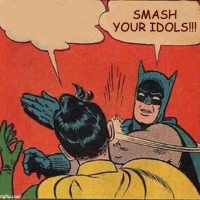DjangoBooks.com
Welcome to our Community!
Categories
- 20K All Categories
- 1.1K General
- 476 Welcome
- 59 Archtop Eddy's Corner
- 146 CD, DVD, and Concert Reviews
- 385 FAQ
- 26 Gypsy Jazz Italia
- 27 Photos
- 202 Gypsy Picking
- 21 Unaccompanied Django
- 15 Pearl Django Play-Along Vol.1
- 17 Gypsy Fire
- 45 Gypsy Rhythm
- 1.4K Gypsy Jazz University - Get Educated
- 130 Gypsy Jazz 101
- 224 Repertoire
- 218 History
- 708 Technique
- 51 Licks and Patterns
- 6 Daniel Givone Manouche Guitare Method Users Group
- 20 Eddie Lang Club
- 1.3K Gypsy Jazz Gear
- 801 Guitars, Strings, Picks, Amps, Pickups and Other Accessories
- 457 Classifieds
- 49 Recording
- 62 Other Instruments
- 18 Violin
- 5 Mandolin
- 22 Accordion
- 7 Bass
- 10 Woodwinds
- 347 Gypsy Jazz Events
- 143 North America
- 109 Europe
- 95 International










Comments
Learn how to play Gypsy guitar:
http://alexsimonmusic.com/learn-gypsy-jazz-guitar/
Actually, if you want a historically accurate 14-fret oval-hole, you'll be in trouble quite soon. I quoted you, Ted on your opinion about Charle above, though the subject was braces, not neck enforcements in that chapter, because I agree totally with you when it comes to his knowledge on these guitars. And according to him, 14-fret necks in Selmers didn't even have the metal reinforcements - the shorter-scale D-holes had, as they were designed by Maccaferri. This is the reason - again according to F. Charle - why the necks in the existing oval-hole Selmers mostly are banana-shaped, if they haven't been fixed later by a skilled luthier.
There was a long thread on this subject in the Y***o forum some time ago, and the majority seemed to insist that these guitars are very different than any others: when it comes to neck relief, most (who contributed) preferred straight necks with NO relief at all for SelMacs. The conclusion was that since the necks don't require relief, they don't require adjustment, hence they don't require adjustable rods.
That said (to show also opinions that differ from mine), I wouldn't buy a guitar without adjustable rod either. I live in Finland in a city by the sea, where the changes in humidity between extremes during a year are huge, no matter what you do to try to even the changes. I haven't perceived any difference in sound between guitars with and without - at least the differences in sound very likely weren't caused by neck design. I have, however, noticed a very big difference in sound and playability in my guitars between winter and summer, and required adjustments include all magic tricks known to man including shimming and adjusting.
Kimmo
http://www.jazzpartout.com
Speaking of truss rods and neck resets, one of the things to consider when buying a new instrument is availability of customer service; if you're in N. America, it may be easier to get that if you buy from a luthier on this side of the Atlantic.
Charlie
I think aluminum strips may be more resistant to corrosion
Instrument prices are all about demographics!
As a fourstring banjo player, I have watched the decline of prices for beautiful vintage instruments.
The elderly generation of banjo collectors are dying off and the “new generation” of baby boomer buyers my own age is much smaller.
Naturally this drives prices down.
When I die and my children put my beautiful banjos on the market... will anybody want them?
Right now, there is a “new generation” of guitar collectors recently retired from well-paying jobs as doctors, lawyers, etc etc
These wealthy boomers can afford to buy all the beautiful instruments they could never afford when they were young, and many of them have huge, expensive collections.
But just like the banjo, if upcoming generations gradually lose interest in expensive vintage instruments, then prices will inevitably go down.
This trend is especially visible with piano prices.
Younger people are simply not interested in buying a piano at any price, and pianos are being given away to anyone who will take them... this is Golden Age of cheap used pianos!
I had a pre-pandemic gig at an old folks home in Buffalo NY and our dixieland band played in an auditorium containing approximately eight lovely old pianos which had been donated to the home... nobody wanted them, nobody ever played them...
Edgar Degas: "Only when he no longer knows what he is doing does the painter do good things.... To draw, you must close your eyes and sing."
Georges Braque: "In art there is only one thing that counts: the bit that can’t be explained."
When I was living in Scotland, the young officers of the RAF would take pianos for certain occasions and they would burn them in the forecourt of the Officer's Club. This might be done in memory of a fallen colleague or in celebration after a large training exercise with other countries. The pianos were usually easy to acquire for free....unless they let on that they were from the RAF and were going to burn them. People are sentimental about these things. They don't want this oversized heirloom that is never used, yet they desire someone who will appreciate it. I hope someone will treasure your banjos.
Oh, these beautiful instruments will for sure be treasured by somebody.
But they may not attract the prices that I paid for them!
Luckily, however, that will not be my problem...
Edgar Degas: "Only when he no longer knows what he is doing does the painter do good things.... To draw, you must close your eyes and sing."
Georges Braque: "In art there is only one thing that counts: the bit that can’t be explained."